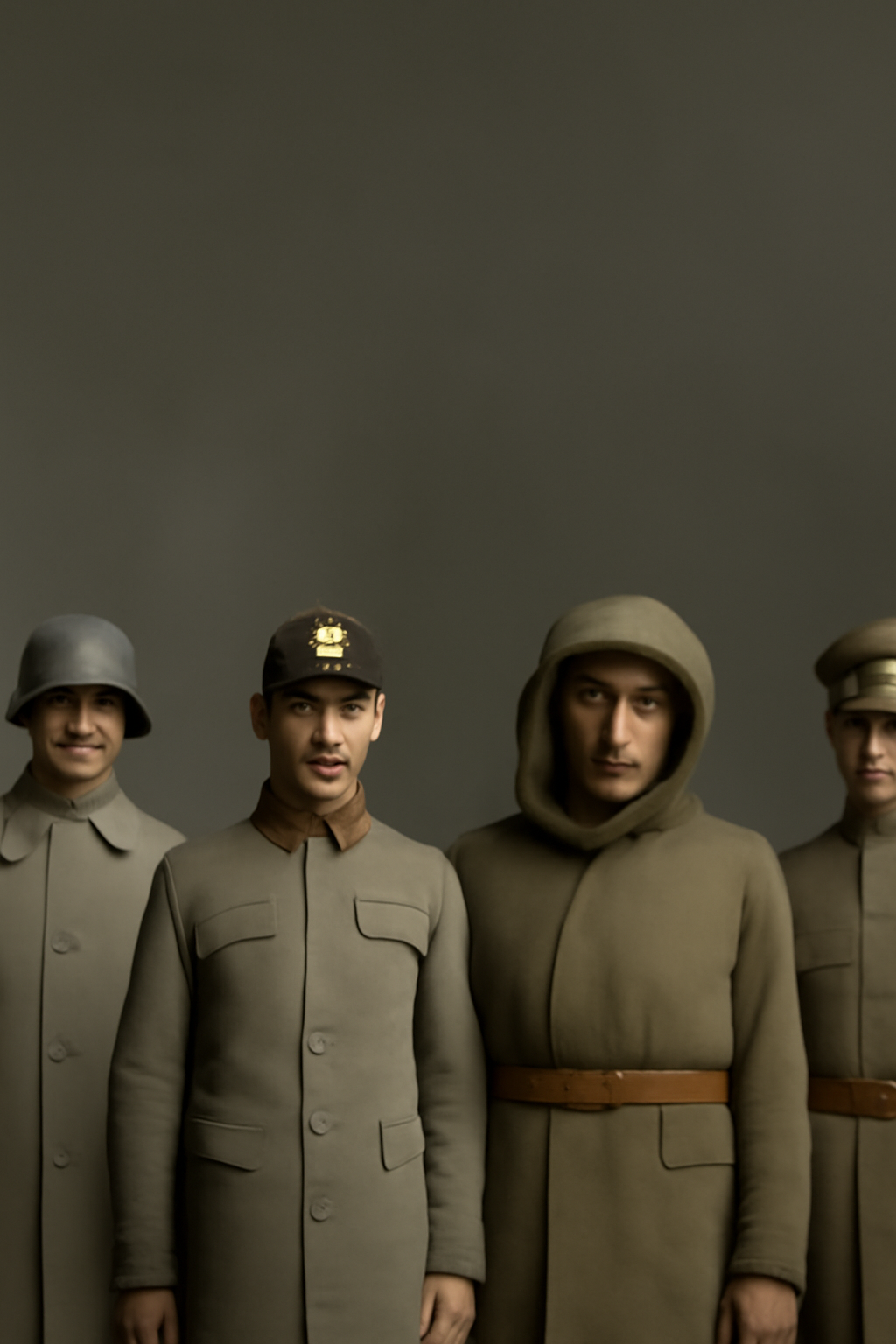
Exploring Authentic German WW1 Uniforms: History, Details & Collectible Options
Published on Jun 10, 2025
Introduction to German WW1 Uniforms
German WWI uniforms stand out not just for their historical relevance but also for their detailed craftsmanship. From the trenches of the Western Front to reenactment fields today, these uniforms tell stories of an era marked by immense change, hardship, and military evolution. Whether you're a collector, a WW1 enthusiast, or someone searching for high-quality replicas, understanding the components and significance of these uniforms helps you appreciate their value.
A Brief History of WW1 German Uniforms
Before World War I, German military attire was influenced by 19th-century styles, particularly the Prussian military tradition. However, as the war progressed, practicality began to dominate design.
The Evolution During WW1:
- Pre-War (1907 Feldgrau Uniform):
- Introduced just before WW1, the field-grey uniform ("Feldgrau") replaced the earlier colourful designs. This shift helped German troops blend into European battlefields.
- 1914–1916 Adjustments:
- Uniforms became more standardized and utilitarian. The wool used for tunics and trousers became coarser due to material shortages.
- Late-War Adaptations:
- Simpler cuts and fewer decorative elements marked the later uniforms, reflecting both the dire economy and the intense demands of trench warfare.
Key Components of WW1 German Uniforms
1. WW1 Greatcoat (Mantel)
A staple of the German soldier's attire, the WW1 greatcoat provided essential warmth and protection. Made of thick wool and often dyed in field grey, it featured:
- Double-breasted front
- Fold-down collar
- Shoulder straps for rank insignia
- Turn-back cuffs
Greatcoats are not only functional but are also a favoured item among reenactors for their historical accuracy.
2. Tunics (Bluse)
The M1915 Bluse replaced older-style tunics mid-war. It was shorter, more practical, and used fewer materials. Piping and buttons varied by branch—infantry, artillery, etc.
3. Headgear (Pickelhaube and Stahlhelm)
The iconic Pickelhaube (spiked helmet) was gradually replaced by the Stahlhelm (steel helmet) in 1916, offering better protection in trench combat.
4. Trousers and Boots
German soldiers typically wore straight-leg wool trousers and jackboots. As the war continued, gaiters and ankle boots became more common due to material shortages.
Collecting and Buying WW1 German Uniforms
At Paddelaters.com, we specialize in authentic and replica WW1 German uniforms for sale, ideal for:
- Historical reenactments
- Museum displays
- Military collections
- Film and stage productions
Why Choose Us?
- Historical Accuracy: Our uniforms closely match original military specifications.
- Quality Materials: From genuine wool greatcoats to replica metal buttons, every detail matters.
- Global Shipping: Get your WW1 and WW2 gear delivered to your doorstep.
Related Uniforms You Might Like
Although the focus here is German WW1 uniforms, many enthusiasts branch into related eras and styles. Here's what else you'll find on our site:
WW2 German Winter Jacket
Essential for harsh climates, the WW2 parka evolved from WW1 greatcoats. Insulated and robust, it features fur lining and camouflaged patterns, ideal for Eastern Front reenactments.
WW2 Italian Officer Uniform
Italian officer uniforms from WW2 combine sharp tailoring with Mediterranean military flair. They are popular among collectors due to their rarity and aesthetic appeal.
WW1 vs. WW2 Uniforms: What's the Difference?
While WW1 uniforms emphasized durability and camouflage, WW2 uniforms expanded on these elements with better insulation, lighter materials, and advanced camouflage techniques.
FeatureWW1 UniformsWW2 Uniforms
Material Heavy wool Lighter, mixed fabrics
Design Formal with Prussian influence More utilitarian and mobile
Headgear Pickelhaube → Stahlhelm Stahlhelm variations
Climate Adaptation Greatcoat Winter parka, reversible camouflage
Tips for Identifying Authentic Pieces
Whether you're a first-time buyer or a seasoned collector, spotting authentic pieces or high-quality replicas is crucial. Here's how:
- Check Fabric Texture: WW1 uniforms used coarse wool—look for appropriate texture and weight.
- Examine Buttons and Stitching: Originals often have hand-stitched details and regimental buttons.
- Look for Maker's Marks: Many uniforms were stamped with factory and military department labels.
- Consult Reputable Sellers: Avoid cheap knock-offs by shopping from trusted suppliers like Paddelaters.com.
Caring for Your WW1 Uniform
To preserve historical pieces or replicas:
- Store in dry, cool conditions
- Avoid plastic storage bags (opt for breathable fabric bags)
- Use cedar or mothballs to deter insects
- Spot-clean wool with gentle detergents
Conclusion
German WW1 uniforms are more than just garments—they're tangible links to a pivotal era in world history. Whether you're drawn to their historical context, military detail, or aesthetic appeal, owning a piece of this heritage is both an honour and a responsibility. At Paddelaters.com, we're proud to keep history alive by offering the best in quality and accuracy.
